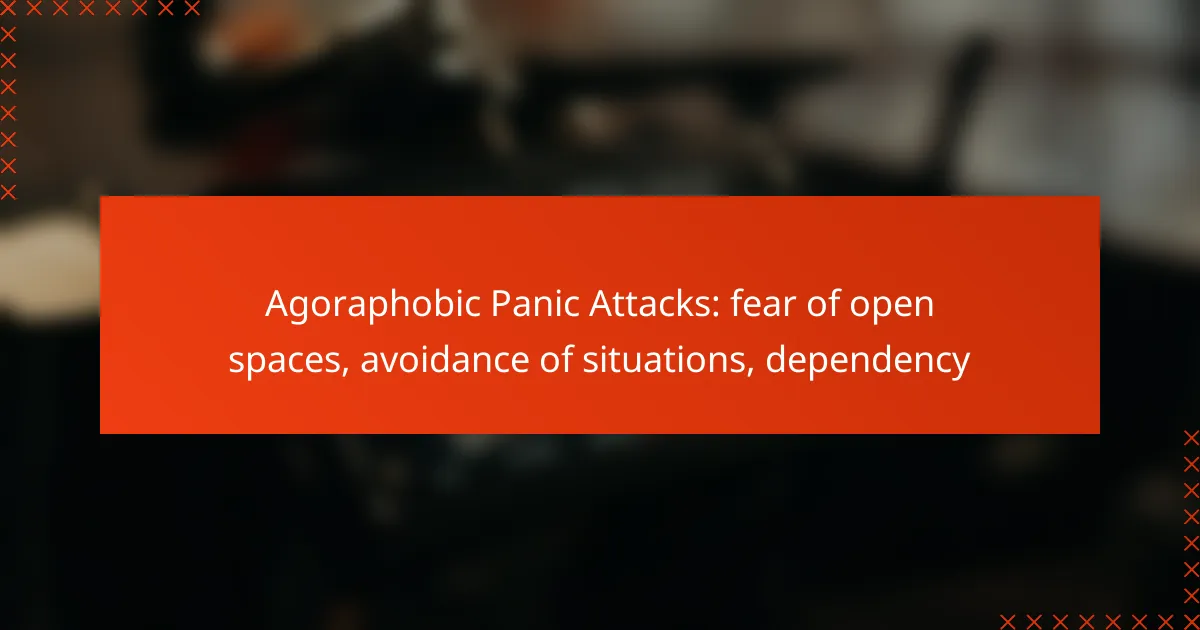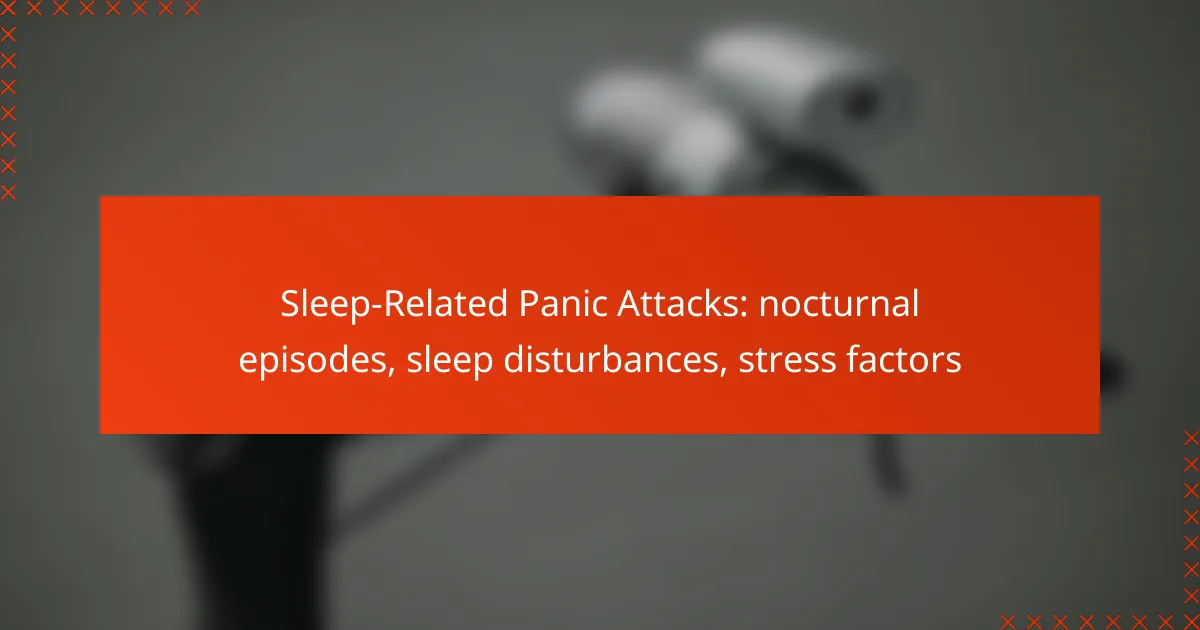Cued panic attacks are characterized by identifiable triggers and predictable patterns, often stemming from specific environmental factors, social situations, or past experiences. Recognizing these triggers is essential for effective management, allowing individuals to develop strategies to reduce the frequency and intensity of their panic attacks. By understanding the underlying causes and patterns, individuals can regain control over their responses and improve their overall well-being.
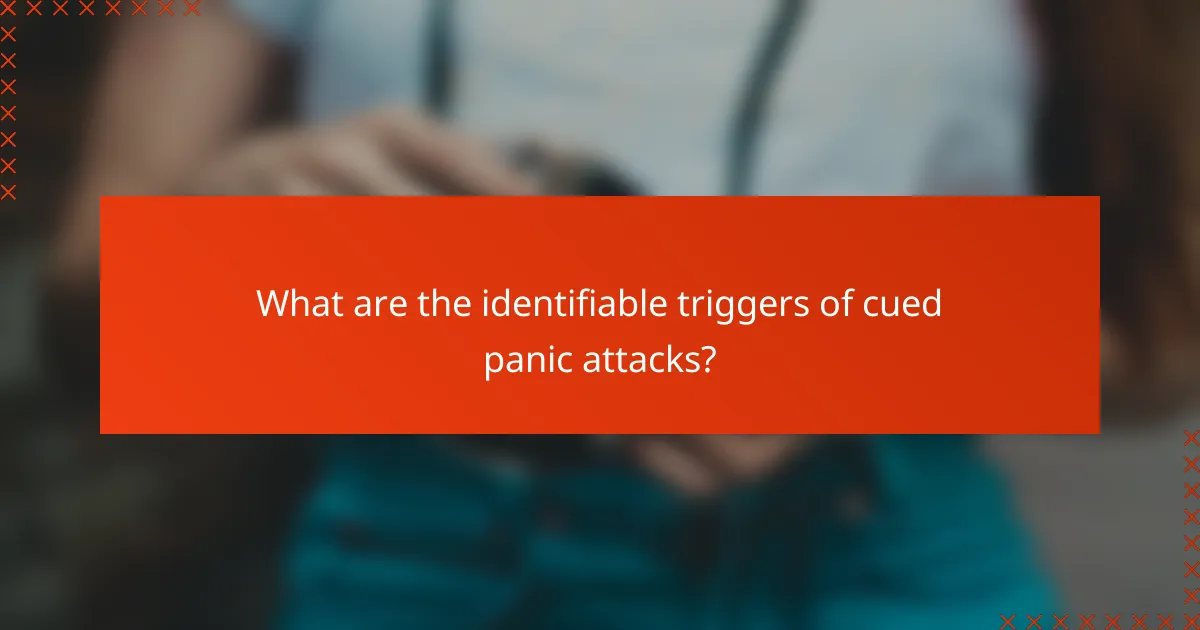
What are the identifiable triggers of cued panic attacks?
Identifiable triggers of cued panic attacks can include specific environmental factors, social situations, memories, physical sensations, and substance use. Recognizing these triggers is crucial for managing and reducing the frequency of panic attacks.
Environmental stimuli
Environmental stimuli such as crowded places, loud noises, or certain smells can trigger panic attacks. For instance, being in a confined space like an elevator may evoke feelings of panic in some individuals. Identifying these stimuli can help individuals avoid or prepare for situations that may lead to an attack.
Creating a list of common environmental triggers can be beneficial. This can include places like shopping malls, public transport, or even specific rooms that have previously been associated with panic attacks.
Social situations
Social situations, particularly those involving large groups or unfamiliar people, can serve as triggers for panic attacks. Events like parties, meetings, or public speaking may provoke anxiety and lead to an attack. Understanding one’s comfort level in social settings is essential for managing these triggers.
To cope, individuals might consider gradually exposing themselves to social situations, starting with smaller gatherings and progressively increasing the size as they become more comfortable.
Specific memories
Specific memories, especially those linked to trauma or distress, can elicit panic attacks when recalled. These memories may resurface unexpectedly, leading to intense feelings of fear or anxiety. Keeping a journal to track these memories can help individuals recognize patterns and prepare for potential triggers.
Working with a therapist to process these memories can also be beneficial, as it may reduce their emotional impact over time.
Physical sensations
Physical sensations such as increased heart rate, sweating, or dizziness can trigger panic attacks, especially if they are misinterpreted as signs of danger. Individuals may become hyper-aware of their bodily sensations, leading to a cycle of anxiety. Learning to differentiate between normal physiological responses and panic symptoms is crucial.
Practicing mindfulness or relaxation techniques can help individuals manage these sensations and reduce the likelihood of a panic attack occurring.
Substance use
Substance use, including alcohol, caffeine, or recreational drugs, can trigger panic attacks or exacerbate anxiety symptoms. For example, excessive caffeine consumption may lead to increased heart rate and jitteriness, which can mimic panic attack symptoms. Monitoring and moderating substance intake is essential for those prone to panic attacks.
Individuals should consider keeping a diary of their substance use and any associated feelings of anxiety or panic, which can help identify problematic patterns and inform healthier choices.
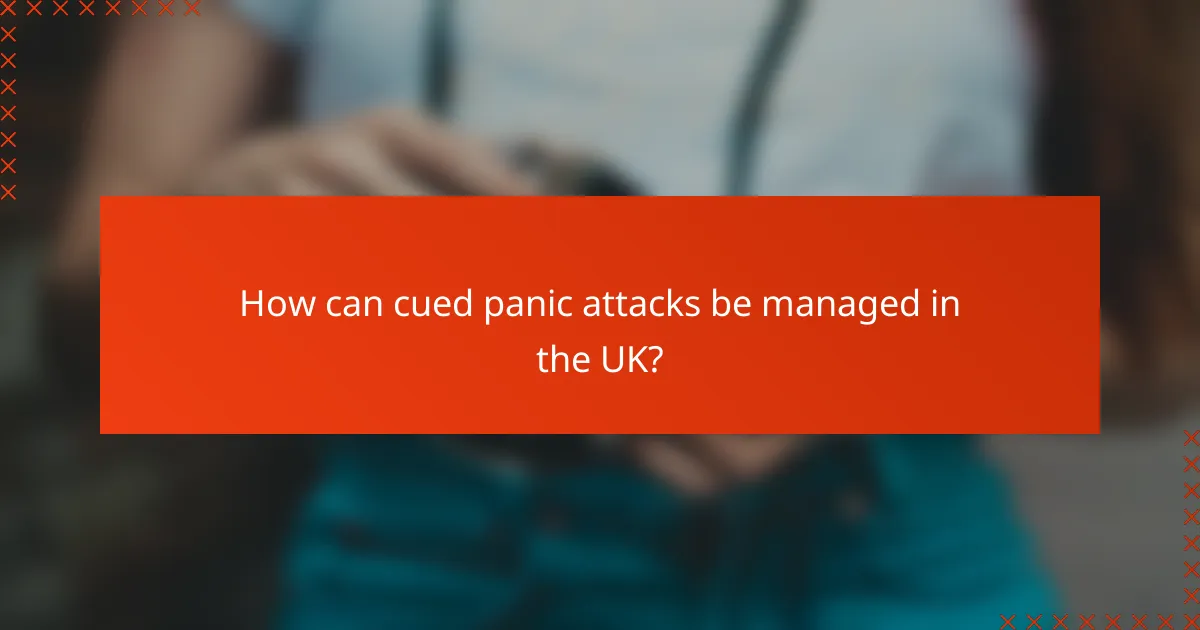
How can cued panic attacks be managed in the UK?
Cued panic attacks can be effectively managed in the UK through a combination of therapeutic interventions, medication options, self-help strategies, and support groups. Understanding these approaches can help individuals regain control and reduce the frequency and intensity of their panic attacks.
Therapeutic interventions
Therapeutic interventions for cued panic attacks often include cognitive-behavioral therapy (CBT), which focuses on identifying and changing negative thought patterns. Exposure therapy is another effective method, gradually exposing individuals to their triggers in a controlled environment to reduce anxiety over time.
Working with a qualified therapist can provide personalized strategies and coping mechanisms tailored to individual experiences. Sessions typically range from weekly to bi-weekly, depending on the severity of the condition and the individual’s needs.
Medication options
Medication can be a useful component in managing cued panic attacks, particularly for those who experience frequent or severe episodes. Common options include selective serotonin reuptake inhibitors (SSRIs) and benzodiazepines, which can help alleviate symptoms and reduce anxiety levels.
Consulting with a healthcare professional is essential to determine the most appropriate medication, as they can assess potential side effects and interactions. Regular follow-ups can help monitor the effectiveness and adjust dosages as needed.
Self-help strategies
Self-help strategies play a crucial role in managing cued panic attacks. Techniques such as deep breathing exercises, mindfulness meditation, and progressive muscle relaxation can help reduce anxiety and promote a sense of calm. Keeping a journal to track triggers and responses can also provide valuable insights for managing future attacks.
Establishing a regular exercise routine and maintaining a balanced diet can further contribute to overall mental well-being. Engaging in activities that promote relaxation, such as yoga or art therapy, can also be beneficial.
Support groups
Joining a support group can provide individuals with a sense of community and understanding, which is vital for managing cued panic attacks. These groups often share experiences, coping strategies, and resources, fostering a supportive environment for recovery.
In the UK, various organizations offer both in-person and online support groups, making it easier to connect with others facing similar challenges. Participating in these groups can enhance motivation and provide encouragement throughout the management process.
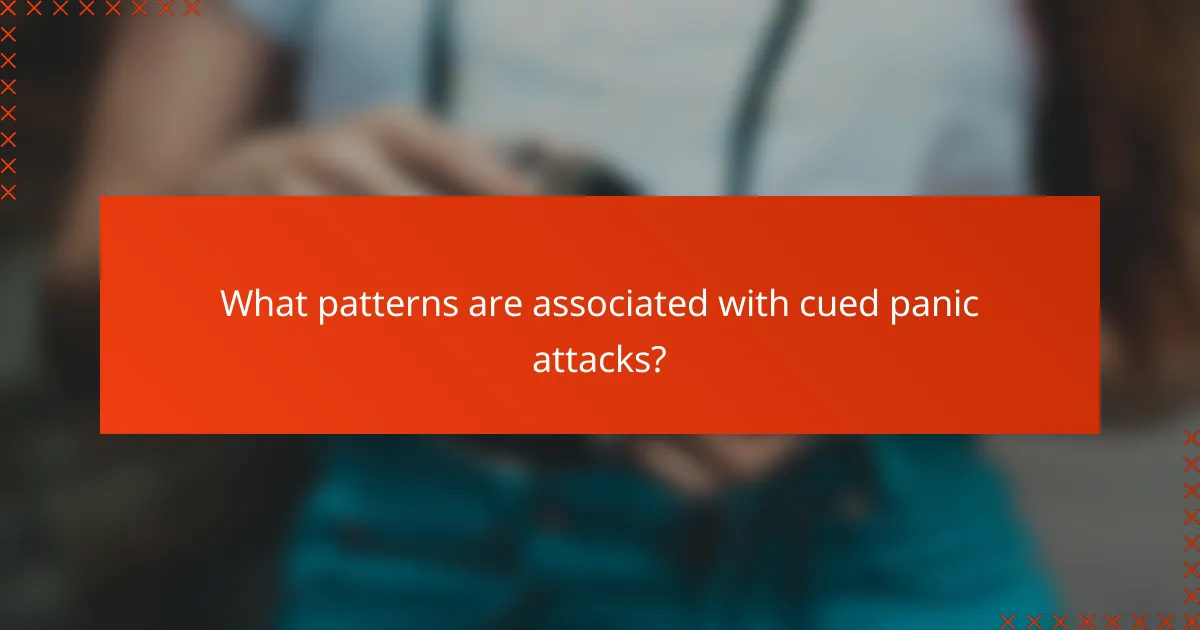
What patterns are associated with cued panic attacks?
Cued panic attacks often follow identifiable triggers and exhibit predictable patterns. Understanding these patterns can help individuals manage their responses and reduce the frequency of these distressing episodes.
Frequency of occurrence
The frequency of cued panic attacks can vary widely among individuals. Some may experience them sporadically, while others might face multiple attacks in a single week. Identifying specific triggers can help in predicting when these attacks are likely to occur.
Common triggers include stressful situations, certain environments, or even specific thoughts. Keeping a journal to track these occurrences can provide insight into patterns and help in developing coping strategies.
Duration of episodes
Cued panic attacks typically last from a few minutes to about half an hour, although the intensity may fluctuate during this time. Understanding that these episodes are usually time-limited can help individuals manage their anxiety during an attack.
Some people may feel residual effects, such as fatigue or heightened anxiety, after the episode has ended. Recognizing this can aid in planning for recovery and self-care following an attack.
Physical symptoms
Physical symptoms of cued panic attacks can include rapid heartbeat, shortness of breath, dizziness, and trembling. These symptoms often mimic those of a heart attack, which can increase anxiety during an episode.
Being aware of these physical manifestations can help individuals differentiate between a panic attack and other medical emergencies. Techniques such as deep breathing or grounding exercises can mitigate these symptoms and promote a sense of control during an attack.

How do past experiences influence panic attacks?
Past experiences significantly shape how individuals respond to panic attacks, often creating identifiable triggers and predictable patterns. Traumatic events, previous panic episodes, and learned behaviors can all contribute to the likelihood and intensity of future attacks.
Childhood trauma
Childhood trauma can have lasting effects on emotional regulation and anxiety levels, making individuals more susceptible to panic attacks later in life. Experiences such as abuse, neglect, or significant loss can create a heightened state of alertness, leading to exaggerated responses to stressors.
For instance, a child who faced bullying may develop a fear of social situations, which can manifest as panic attacks in similar contexts during adulthood. Recognizing these links can be crucial for effective treatment and coping strategies.
Previous panic episodes
Experiencing panic attacks can create a cycle of fear and avoidance, where individuals become anxious about having another attack. This anticipation can trigger panic symptoms even in safe environments, reinforcing the cycle.
For example, someone who has had a panic attack while driving may start to avoid driving altogether, fearing a recurrence. Understanding this pattern can help individuals break free from the cycle through exposure therapy and gradual desensitization.
Learned behaviors
Learned behaviors from family or peers can influence how individuals respond to anxiety and panic. If a person grows up in an environment where anxiety is expressed openly, they may adopt similar responses when faced with stress.
Additionally, coping mechanisms such as avoidance or excessive reassurance-seeking can become ingrained. Identifying and modifying these behaviors can be essential in managing panic attacks effectively.


